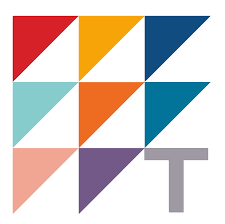Analytics, Big Data and Business Intelligence – Montreal
Key Points
The rapid technological advances of recent years now require new knowledge and skills. In order to establish themselves in a competitive ecosystem, companies can now base their business strategies on big data and technologies derived from artificial intelligence research (Blockchain, Complex Systems, Automation of Scales, etc.).
One Upon completion of their training, the student will be able to configure networked and automated databases, operate data warehouses, perform fine analysis, and produce detailed reports. This essential work will give you a competitive advantage.
Trebas Institute’s analytics, big data and business intelligence program will give you the tools and knowledge you need to help create value for the company you work with. < / p>
Become an expert in analytics, BI and big data. Study using industry standard software programs and online platforms, within a curriculum that is constantly updated to give you an edge in the job market.
Professional Opportunities
Our graduates will be able to pursue successful careers in the following roles:
- Database administrator
- Data dictionary administrator
- Database administrator data
- Database analyst
- Data / computer and systems analyst
- Data repository analyst
- Data mining analyst data
- Information resources analyst
- Electronic data processing systems analyst
- Electronic data processing analyst
- Data designer database
- Data explorer
- Database administrator – computer systems
- Data administrator
- Computer specialist
database / computer systems management supervisor
Skills and competences
Throughout this program, you will develop some of the following skills and competencies:
- Processing information related to the work environment in the field of computer science.
- Install and manage computers
- Use programming languages
- Solve IT problems with math
- Use office software
- Use principles of the programming orientation
- Operating a database administration system
- Security prevention operations in information security: interacting in a professional context
- Evaluate hardware and software components
- Automate IT network management tasks
- Develop data exchange services
- And much more! < / li>
Program structure
Admission requirements
Under the provisions of section 4 of the University Education Regulations regarding admission conditions, a person who has received instruction deemed sufficient by the university and meets any of the following conditions may be admitted to a study program leading to a Certification of University Studies. :
- The person has interrupted their studies full-time or has completed post-secondary studies full-time for at least 2 consecutive terms or 1 school year;
- The person is covered by an agreement between the university and an employer or by a government study program;
- The person has interrupted his studies full-time for a period and has completed post-secondary studies full-time for a period; or
- The person has a vocational high school diploma.
Specific admission criteria for an ACS / AEC
A person applying for a ACS / AEC program must have sufficient oral and written proficiency in the language of instruction. A person who has studied outside of Quebec must provide the result of a proficiency test for the language of instruction.
For programs where the language of instruction is English, the accepted language proficiency tests are:
- International English Language Assessment System (IELTS): 5
- Test of English as a Foreign Language (TOEFL) IBT: 55
- Assessment of Cambridge English Language: 162
- Canadian Academic English Language (CAEL): 40
- Academic PTE: 42
- Duolingo: 85
Learn more about our educational offer
Request your quote
An advisor will contact you by phone and email within the following hours


